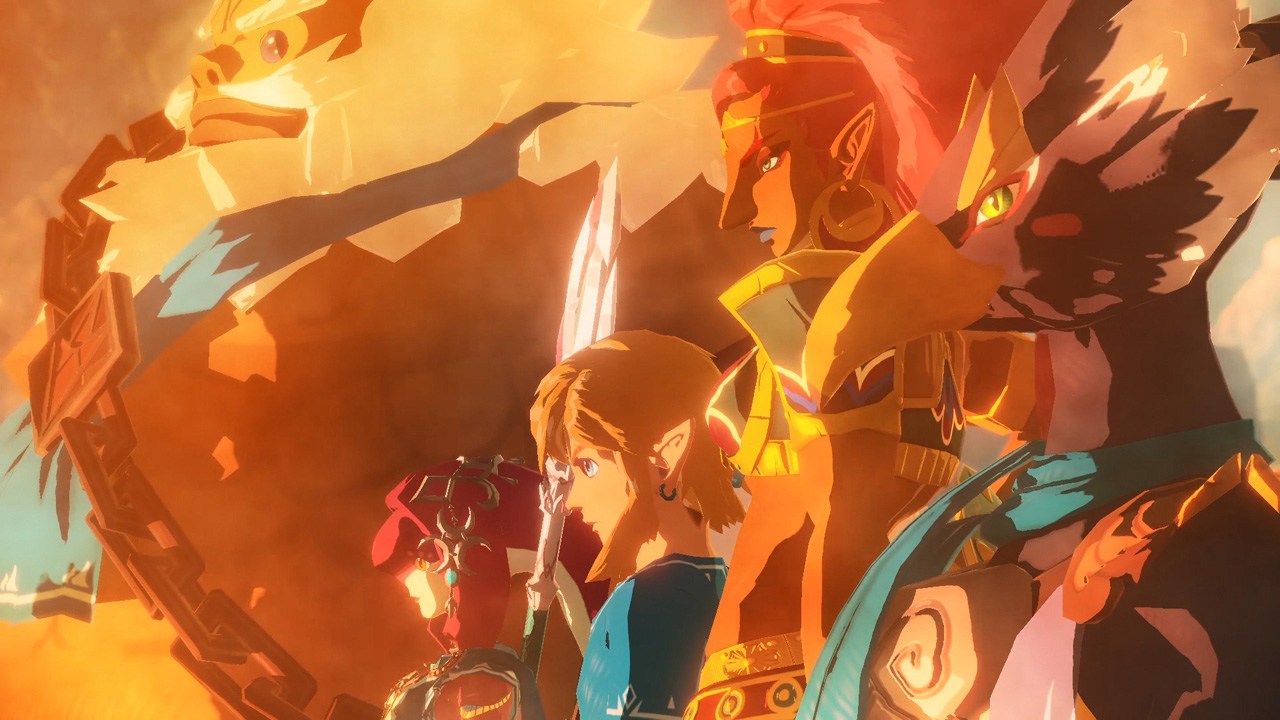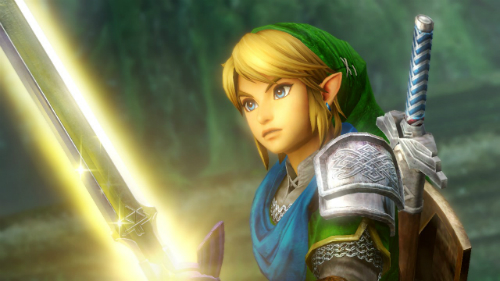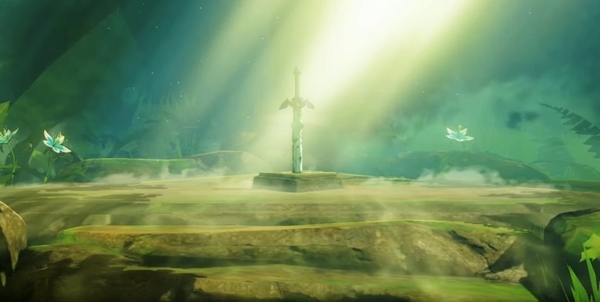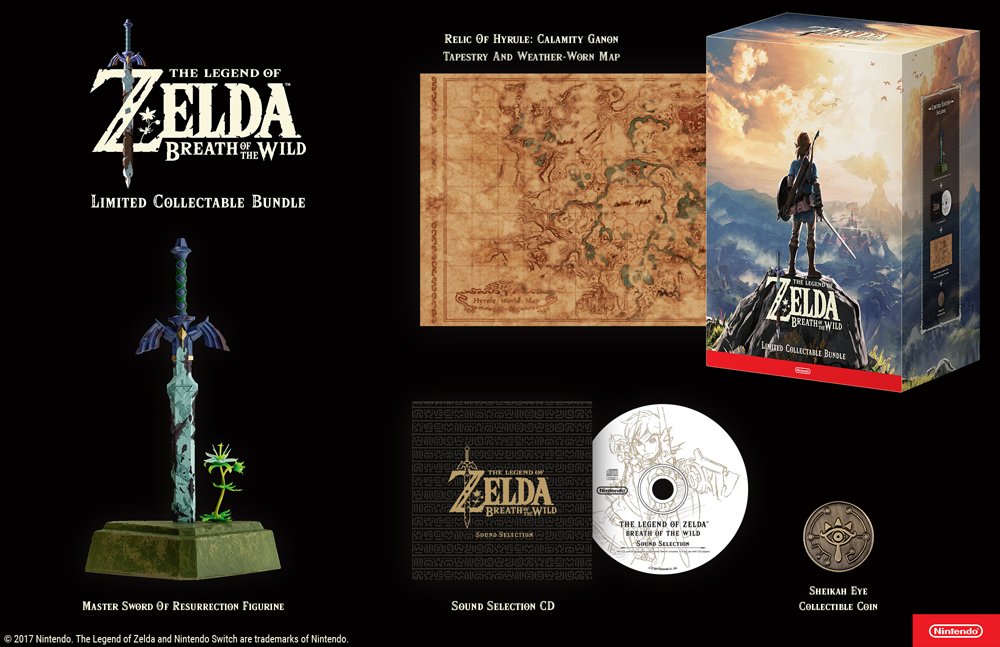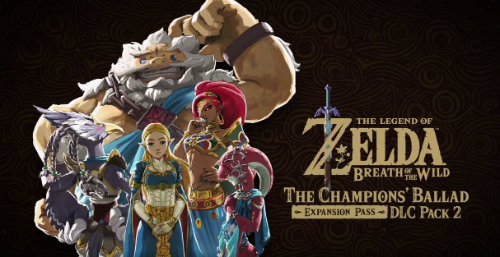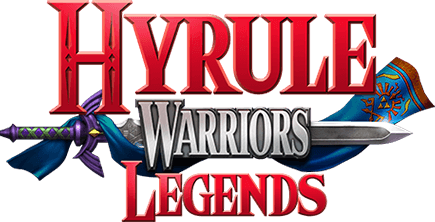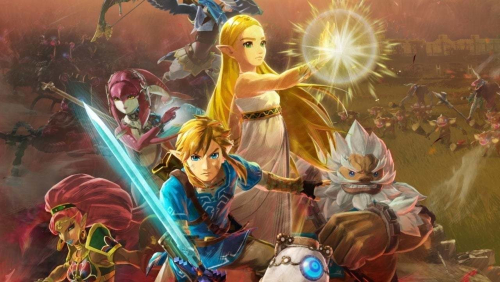
Breath of the Wild is one of the Nintendo Switch’s most popular titles. So popular in fact, that a direct sequel is in development and highly anticipated by fans. But if you thought a sequel was the only way to get back into the Wilds, think again, as Hyrule Warriors: Age of Calamity acts as a prequel that lets players experience how the Calamity came to unfold.
Set 100 years before Breath of the Wild, Hyrule Warriors: Age of Calamity begins with a small Guardian activating just as Zelda awakens her power to seal away Calamity Ganon. The Guardian travels through time to before the Calamity began, warning Link, Zelda and other heroes of Hyrule of the coming danger. The story is told through cutscenes between major missions, and we witness Link and Zelda recruit the four Champions and rise up against the evil Yiga Clan, as well as a new mysterious villain named Astor. The story is great in the sense it lets players see more of the Champions than what was featured in Breath of the Wild, and it both compliments that game as well as stands on its own if you haven’t played it before. Is it official cannon? I’m not going to spoil that one, but rest assured if you’re a Zelda fan then this game should be right up your alley.
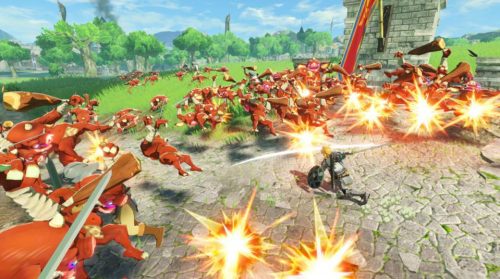
Like the original Hyrule Warriors and countless other Musuo games, Age of Calamity is a hack and slash “one vs. one thousand” title. The basic premise is that you take to a battlefield and fight hundreds if not thousands of enemies, unleashing various combo attacks as you make your way to the main objectives. The novelty comes from fighting as the iconic Legend of Zelda characters, including Link, Zelda, Impa, the four Champions, and various other side characters. Each character has their own play style, which prevents the gameplay from getting stale. Daruk, for example, is a bulky character who strikes slower than other fighters but overall is more powerful and can also explode lava. Revali, in contrast, utilises a bow and arrows that makes quick and successive, but less powerful, strikes and he can fly above to shoot down the fodder enemies. Some fighters are more practical than others, but overall it’s a great mix. Every character is unique, and there is much fun to be had simply trying out everyone.
Each character also has access to Sheikah Rune abilities, namely, Remote Bombs, Cryonis, Magnesis, and Stasis. While these can be used for standard combat, they’re primarily useful for officer and boss encounters, such as Moblins, Wizzrobes and Lynels. These enemy variants have higher health and won’t be stunned by regular attacks. Instead, the strategy here is to reveal and deplete their stun meter. When they’re about to perform a special attack, a symbol will appear above their heads which indicates which rune can be used to stun them. If timed correctly, you will make short work of the officer. There are other options as well; if you correctly dodge an attack at the right moment you will activate a flurry attack, and there are also brief moments when the stun meter appears between enemy attacks. The actions on-screen look cool and it’s always satisfying to take down stronger opponents. Although, as is the case with all Musuo titles, repetition can set in if you’re not switching between characters regularly. Like Hyrule Warriors: Definitive Edition (and Hyrule Warriors Legends for 3DS), you can switch between multiple playable characters completely on the fly, which helps negate some of this repetition.

You will also have access to wands which can be used against elemental versions of enemy officers. Fire officers, for example, are weak against the ice wand which freezes them in place, whereas the lightning wand will stun foes and is particularly effective if enemies are standing in water. If you’re using a fire wand against a fire type enemy, then there will be little to no effect, so strategy is a key component to consider.
There are a lot more influences from Breath of the Wild. Link for example, can be adorned with various armour pieces and has lots of different weapons he can fight with. How about a wooden ladle? Not your style? You can go with a Boko Club, a Bokoblin arm or the legendary Master Sword. Recipes are also featured; using materials you have collected during combat, you can create and devour meals which will give you an edge in battle. Some recipes will increase your attack strength, decrease damage taken from enemies or influence the drop rate of rarer weapons. There’s also a Blacksmith where you can sell weapons for rupees or combine weapons to enhance their strength and traits. Even Korok seeds are hidden throughout the levels! A lot of care has been taken in making Age of Calamity true to the Breath of the Wild experience.
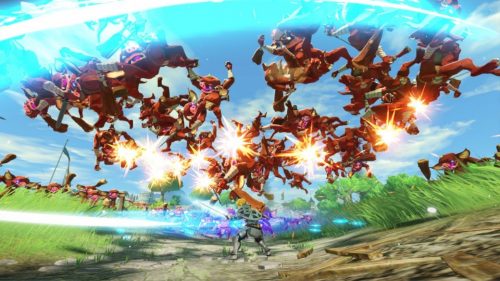
What is arguably more important though is the world itself. Rather than a typical level select screen, Age of Calamity features Breath of the Wild’s overworld map where players can select missions. Some of these missions are core to the story and have a bigger icon, but other missions are optional. Some missions will be specific to certain characters, while others will give you the option to pick who you enter the battle with. Others are not even combat centric, instead rewarding you with extra health or combo moves if you simply turn in specific materials. Each mission has a recommended level, though you can always attempt them even if you are under. To help negate unnecessary grinding, there is an option to spend rupees to level up characters, but you are limited to only matching the character with the highest level in your team. The progression system is well balanced; throughout my time with the game I rarely had to repeat missions unless I wanted to collect specific enemy drops/materials. If you’re going to be doing many of the optional quests, then you will have no issues getting through the campaign.
Being set only 100 years before Breath of the Wild, the game does feature many of the same locations. Zora’s Domain, Hyrule Castle and the Yiga Clan hideout are just a few of the many returning locales. There are some differences, such as the town near Hyrule Castle being an established village instead of a mess of ruins, but that just gives a better idea of how ravaging the Calamity really was. It’s really nice to venture back into the world and fight in these locations again.
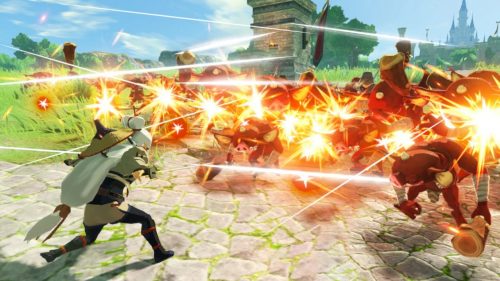
Age of Calamity features the same art style as Breath of the Wild. Notably the graphics aren’t quite as sharp as they were in the latter game, though that’s likely due to the dozens of enemies that appear on screen. There are unfortunately some frame rate issues when fighting lots of enemies – Koei Tecmo never seems to have mastered getting their games to run smoothly on Nintendo Switch – but the action remains frantic and as engaging as ever. The game is hard to see clearly when playing in handheld mode due to characters and enemies appearing very tiny, though the frame rate also seems to be smoother overall. The voice actors from Breath of the Wild reprise their roles here as well, further tying the two games together. Unfortunately the game’s music is hit and miss, some tunes will stay with you, but others are forgettable.
Hyrule Warriors: Age of Calamity is a great follow up to Breath of the Wild. Despite the core gameplay differences, the developers have taken great care to replicate the world and bring many of the title’s more charming features across to the Musuo experience. There are some drawbacks such as frame rate issues and repetitive gameplay. But the story, characters, frantic action and overall charm more than make up for these flaws.
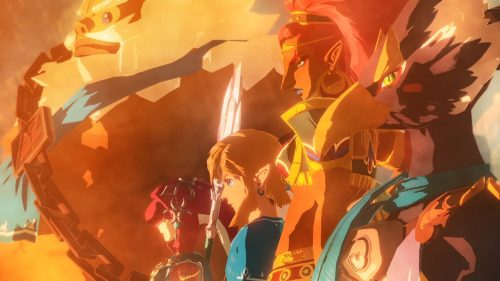
Hyrule Warriors: Age of Calamity was reviewed on a regular Nintendo Switch console with a review copy provided by Nintendo Australia. For more information, check out the game’s official website
- Great variety of playable characters - Care has been taken in recreating Breath of the Wild's environments and some gameplay features - Strong story
- Gameplay can get repetitive - Frame rate issues - Hard to make out tiny enemies in handheld mode

